
2022 Annual Report
Jasper National Park
Download the 2022 Annual Report (PDF 4.7 MB)
Jasper National Park stats 2022

Text version
- More than 2.4 million visitors
- 453,000 + frontcountry campers and 14,800 backcountry campers
- 50 km of winter trails packed by the Friends of Jasper National Park Snowdog
- 40 km of nordic ski trails groomed by Parks Canada
- 120 fire personnel and 10 helicopters used to contain the Chetamon wildfire
- Over 29,000 visitors participated in in-person interpretive programs
- 779 volunteer hours supporting trail maintenance
- Virtual educational programs delivered to 27,000 students across Canada
- 17 Indigenous community events held at the Cultural Use Area
- 4,316 whitebark pine (an endangered species) saplings planted
Introduction
This annual report presents highlights of Parks Canada’s work in Jasper National Park in 2022.
This report follows the same structure as the Jasper National Park of Canada Management Plan (2022) and reports on progress in six strategy areas:
- Conserving natural and cultural heritage for future generations
- True-to-place experiences
- Strengthening Indigenous relations
- Connect, collaborate and learn together
- Managing development
- Climate change and adaptation
Jasper National Park’s management plan was tabled in Parliament in 2022. As a requirement of the Canada National Parks Act, a management plan is a road map for the park over the next decade and is reviewed every ten years. Jasper National Park’s management plan was developed with the input of Indigenous partners, stakeholders and Canadians.
Strategy 1: Conserving natural and cultural heritage for future generations
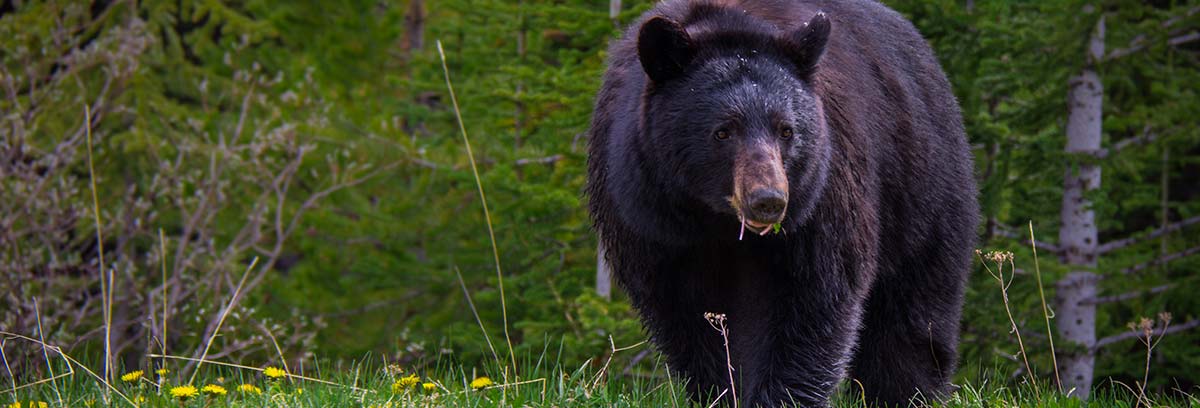
Photo: Ryan Bray Ryan Bray
Southern mountain caribou recovery
Important work continues toward implementing Jasper National Park’s caribou recovery program. Caribou research and monitoring is ongoing, using technologies that include remote cameras, scat DNA analysis and GPS radio collars. Caribou are being observed in remote locations not previously recorded, such as the Chaba River headwaters, Fortress Lake and upper Lick Creek.
Monitoring
In February and March 2022, GPS data from a collared female caribou recorded new observations of the Tonquin herd using the most northwesterly area of their range near Yellowhead Lake. There are ten female caribou with GPS collars in the Tonquin population, allowing park staff to monitor and understand the annual survival of the herd’s most important members, including how caribou are using their habitat and their causes of death.
During the annual aerial survey of the Tonquin caribou range in October 2022, biologists observed 44 caribou. This is the highest minimum count since 2011 and is consistent with the most recent population estimate of 49-55. Only two animals were observed in the Brazeau caribou range, although tracks indicated the presence of a small number of unseen caribou. There have been no sightings of caribou in the Maligne caribou range since 2017.
Conservation breeding
In 2022, Jasper National Park consulted with scientists, researchers, Indigenous peoples, stakeholders and Canadians and conducted a Detailed Impact Assessment on a conservation breeding program to help rebuild caribou populations. Indigenous partners, stakeholders and the public were invited to learn about the proposed program and share their feedback both in-person and electronically.
In February 2023, the Government of Canada announced that Parks Canada will implement a caribou conservation breeding program and begin building a conservation breeding centre in Jasper National Park.
Multi-species Action Plan update
Parks Canada is responsible for the protection and recovery of species in national parks that are listed under the Species at Risk Act. In 2022, the Implementation Report: Multi-species Action Plan for Jasper National Park of Canada (2017-2022) reported on progress towards meeting 26 recovery actions for seven endangered or threatened species. To date, progress has been made on all 26 actions and 13 have been completed. For example, park staff identified common nighthawk nest sites and have added signs to remind visitors to leash dogs while in the park. Park staff created inspection guidelines to help manage bats in buildings and support bat populations. Park staff carried out baseline acoustic monitoring of bats to understand the population and identify important habitats before white-nose syndrome arrives. Finally, among many other actions, two prescribed fires improved important grassland habitat for species at risk.
Bears in the valley
Wildlife sightings are common across the park’s varied landscape and can happen year-round. From May through October 2022, both grizzly and black bears ventured in and out of the Jasper townsite. Increasingly, grizzly bears frequent the area around town in the spring, seeking early season green vegetation and refuge from larger, dominant bears; while black bears were drawn to town primarily by non-native fruit trees in the late summer and fall, which poses a persistent concern to public safety. Parks Canada’s Human-Wildlife Coexistence team responded to these unwelcome visitors using a variety of hazing strategies to deter bear presence in the townsite. Not all bears could be consistently excluded from the townsite and nine bears had to be captured and relocated to suitable habitat in remote areas of the park to ensure both bear and human safety. To help reduce attractants that lure bears into the valley, residents and businesses stepped up in 2022 by removing more than 100 non-native fruit trees. Many more non-native fruit trees remain in the townsite which will continue to pose issues until removed by residents and businesses.
Whitebark pine conservation
As keystone species, whitebark and limber pine are important in high-elevation forests of Western Canada. In 2022, Jasper National Park continued its whitebark pine restoration program, planting 4,316 whitebark pine seedlings. A total of 22,370 whitebark pine have been planted in the park since the beginning of the restoration program in 2015.
Jasper National Park staff, in collaboration with mountain national parks colleagues, created a six minute bilingual film called Planting the Future. The film tells the story of how Parks Canada is recovering the future of whitebark pine trees for present and future generations.
Non-native vegetation management
Non-native vegetation was managed using a variety of techniques in 2022. Specific achievements included an inventory of invasive plants across 1,198 hectares of land within the townsite and park. Over 1,440 Douglas-fir saplings were transplanted from FireSmarted areas in the park to campgrounds. Restoration work was completed on trails 1 and 14 and at Miette Hot Springs and Athabasca Falls.
Mountain pine beetle
Mountain pine beetle is a naturally occurring forest insect that is typically kept in check in Jasper National Park by cold winter temperatures. The recent epidemic-level outbreak was the result of several factors, including warmer-than-average winters and our history of fire suppression, and had a profound impact on the pine forests of Western Canada. After four consecutive winters with either extended cold weather or extreme cold events (days below - 37 °C), mountain pine beetle populations have collapsed in Jasper National Park and the epidemic of 2010s has ended.
The 2022 fall mountain pine beetle extent survey recorded 95.2 hectares of forest with active beetle, compared to 710 hectares in 2021 (at the height of the outbreak 229,000 hectares were affected). Due to four years of winter mortality and lack of favourable habitat in the central portion of the park, significant expansion of the beetle in the main valley of Jasper National Park is considered very unlikely in the near future. However, reasonable habitat and pockets of surviving mountain pine beetle in the southern parts of the park has the potential to impact whitebark pine.
Fire management
Risk reduction
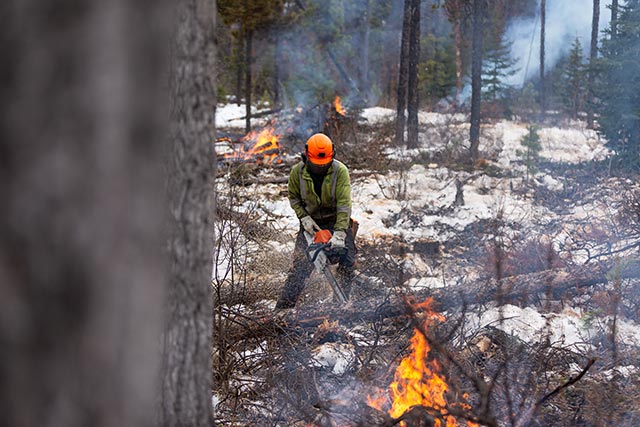
Photo: Luuk Wijk Luuk Wijk
Wildfire risk reduction is a vegetation management practice where land agencies and managers reduce the buildup of fuel load in a forested area, with the aim of reducing the likelihood of a large, uncontrollable wildfire. Throughout the winter of 2022 wildfire risk reduction work focused on areas around Signal Mountain and Cottonwood Creek. Crews used mechanical thinning equipment to selectively remove, pile and burn dead pine (killed by mountain pine beetle) and spruce trees, while protecting Douglas-fir, other live trees and wetland areas. Work to establish a community fireguard along the base of Signal Mountain continued into 2023.
For more information on the Chetamon wildfire see strategy 6: Climate change and adaptation in this report.
Ecological restoration
Conditions in spring 2022 were prime for prescribed fires. In May, fire specialists completed the ignition of 300 hectares of the Henry House prescribed fire unit (approximately 10 km outside the Jasper townsite) to restore native grasslands and reduce long-term wildfire risk. This area was last burned in 2008. Jasper fielded three fire crews, three helicopters and a high-volume water tender truck to ensure safe fire operations. An ignition specialist and extra initial attack crew from Mount Revelstoke and Glacier National Park also came to pitch in. This strategically located prescribed fire is an important part of an on-going program to restore healthy grasslands, create greater forest diversity and help reduce the risk of wildfire.
Aquatic invasive species
Jasper National Park continues to raise awareness about the Clean-Drain-Dry program to prevent the spread of aquatic invasive species such as quagga and zebra mussels. Planning and preparation are underway to pilot aquatic invasive species prevention services for the 2023 season.
Strategy 2: True-to-place experiences
Inclusivity and accessibility
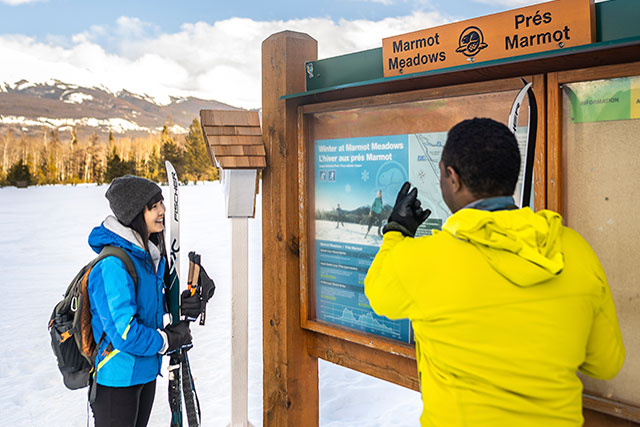
Photo: Brian Van Tighem Brian Van Tighem
For Parks Canada, removing barriers, fostering participation, and embracing diversity are fundamental to the fulfillment of our mandate. Jasper National Park website content was updated with more photos and descriptions of accessible facilities in 2022. Washrooms throughout the park received upgrades to meet accessibility and inclusivity standards and 17 campsites at Whistlers Campground were converted to meet accessibility standards.
Human-wildlife coexistence
In 2022, an education campaign was implemented which included the installation of new information exhibits at Whistlers Campground and in the townsite, as well as an update to the Jasper National Park Backcountry Guide.
Visitor-use management
Visitor-use management strategies and tools are being developed and implemented to manage visitor congestion, demand, behavioural concerns and safety issues, in order to support quality experiences for visitors. In 2022, Parks Canada launched an interactive web map called "JasperNow" to communicate parking availability in real-time at highly-visited day-use areas, such as Lake Annette. The JasperNow site aims to help guide expectations about congestion during peak periods and to manage access and parking issues.
Bring your own bike!
Active transportation continues to be at the forefront of promotional summer messaging. Visitors are encouraged to “BYOB” (Bring your own bike) or rent one and to use Jasper’s connector trail system to help mitigate parking congestion at popular day-use areas.
Trail management
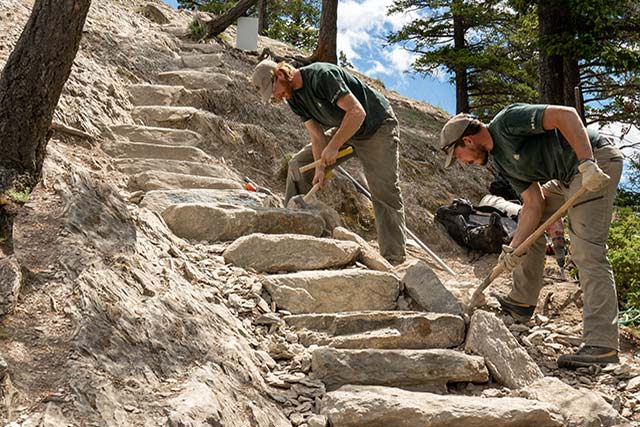
Photo: Rachel Castelletti Rachel Castelletti
Jasper National Park includes 1,100 km of trails and over 80 backcountry campgrounds. The network offers day, overnight and multi-day adventures for a range of ages and abilities. The park continues to invest in the trail network to replace outdated wayfinding signs, and to restore, re-route, update and maintain trails and associated infrastructure.
Improvements to the trail network in 2022 included re-routes on the Jacques Lake Trail (to bypass a floodplain), and on Trail 8c on the Pyramid Bench, providing improved experiences for bikers and hikers. New stone stairs were installed along the Old Fort Point Trail and bridges were replaced along the Saturday Night Lake Loop. The Brazeau Lake bridge is planned to be rebuilt in fall 2023.
Working with the Friends of Jasper
Parks Canada continues to work with the Friends of Jasper National Park. Between June and September 2022, over 779 volunteer hours were dedicated to support trail maintenance. Work included improvements to drainage and realignment on the Valley of the Five Lakes Trail and on Trail 6b on the Pyramid Bench.
Volunteers also removed graffiti on Whistlers Summit.
The Friends of Jasper National Park launched their second season of the Winter Trail Project, which relies on volunteers to operate the “Snowdog”- a purpose-built machine designed to pack down snow-covered trails for ease of access for hikers, snowshoers and bikers. Thank you to the volunteers who packed 50 km of trails throughout the winter!
In-person interpretation
Following two seasons of limited interpretation services during the pandemic, regular in-person interpretive programs returned. Shows resumed at the Whistlers Campground amphitheatre and interpretive experiences were provided at the heritage Fire Hall in town. Throughout the year, over 29,000 visitors participated with park interpreters in stewardship activities on the topics of human-wildlife coexistence, aquatic invasive species prevention and species at risk.
Miette Hot Springs reopening
After being closed for two seasons during the pandemic, the Miette Hot Springs re-opened to the public in May 2022.
Winter in the park
Parks Canada provides a range of winter services to facilitate safe and enjoyable visits. Winter services include avalanche management and snow clearing along highways, as well as maintaining scenic road corridors for sightseeing and wildlife watching in priority areas.
Groomers maintain more than 40 km of Nordic ski trails, for both skate and classic styles. In 2022, a new connector trail was established at the Whirlpool Winter Hub, improving skier access to the Leach Lake staging area and Moab Lake Trail. For snowshoers, a 750 m trail was created connecting users from the Whirlpool Winter Hub to a set of red chairs along the Whirlpool River.
Visitation
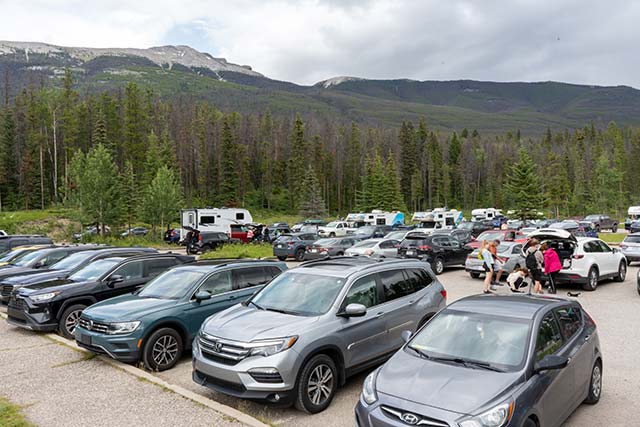
Photo: Rachel Castelletti Rachel Castelletti
Jasper National Park hosted 2.4 million visitors in 2022. 450,000 campers stayed at 11 front country campgrounds, and 14,000 stayed at backcountry campgrounds. Frontcountry campsite occupancy averaged 75% over the entire season.
During peak periods of high visitation comes increased congestion in the park. Parks Canada is committed to developing new and innovative ways to manage visitation in popular areas. This includes establishing better expectations around seasonal visitation influxes, influencing visitor behavior before visitors arrive and on-site, raising awareness of stewardship responsibilities and promoting shoulder-seasons.
Parks Canada is looking long term at the current and emerging issues created by increasing visitation and working with partners to develop solutions to some of the challenges that arise.
| 2017 | 2018 | 2019 | 2020 | 2021 | 2022 | |
|---|---|---|---|---|---|---|
| Frontcountry campers | 558,550 | 558,740 | 392,594 | 191,136 | 389,452 | 453,006 |
| Backcountry campers | 16,999 | 14,316 | 15,229 | 14,966 | 18,624 | 14,872 |
Note: camping capacity was impacted when Whistlers Campground was closed for reconstruction in 2019 and 2020 and reopened in July 2021
| 2017 | 2018 | 2019 | 2020 | 2021 | 2022 | |
|---|---|---|---|---|---|---|
| Attendance | 2,425,218 | 2,434,665 | 2,466,485 | 1,672,497 | 2,113,095 | 2,400,000 |
Strategy 3: Strengthening Indigenous relations

Photo: Emily Goldney Emily Goldney

Photo: Jenny DeMarco Jenny DeMarco
Parks Canada and Indigenous peoples are partners in conserving natural and cultural heritage and sharing the stories of these treasured places. Jasper National Park works with more than 25 Indigenous groups connected to the park.
In 2022, with the ease of pandemic restrictions, in-person gatherings with partners were made possible again. This included gatherings for ceremony, the fall Jasper Indigenous Forum and several project-specific engagements. Public events held in collaboration with partners, included National Indigenous Peoples Day celebrations on June 21 and a commemorative event for National Day for Truth and Reconciliation on September 30.
Cultural Use Area
The Cultural Use Area is a dedicated space established in cooperation with Indigenous partners and is cooperatively managed through the Cultural Use Area Advisory Group.
The Cultural Use Area is an important site for Indigenous partners to gather, camp and host spiritual and community events. Partners hosted 17 events at the Cultural Use Area over the summer and fall of 2022.
In March 2022, Parks Canada worked with Indigenous partners to treat four hectares of land at the Cultural Use Area with wildfire risk reduction measures.
Miette Campground
The Jasper Indigenous Forum and Parks Canada agreed on “Miette” as a temporary name for a park campground while discussions continue to find an acceptable, permanent campground name that properly honours Indigenous cultures and connections to the park.
Indigenous Exhibit
In 2022, construction continued on the Indigenous Exhibit on the grounds of the Jasper National Park Visitor Information Centre, with ongoing partner meetings to provide guidance and input throughout the process. A short film will be created, to document narratives leading to the creation of the exhibit. Construction on the project aims to be completed in 2023.
Engagement on fire management
Indigenous partners came together through in-person and virtual sessions in 2022 to provide guidance to Parks Canada on an interim Fire Management Plan.
The approach to fire management since the establishment of the park has been dominated by Western science, with little awareness of Indigenous Knowledge systems and fire stewardship. Today, we acknowledge the pre-existing Indigenous Knowledge systems that have developed over millennia, with close kinship connections between Indigenous peoples, their lands and its inhabitants.
Strategy 4: Connect, collaborate and learn together
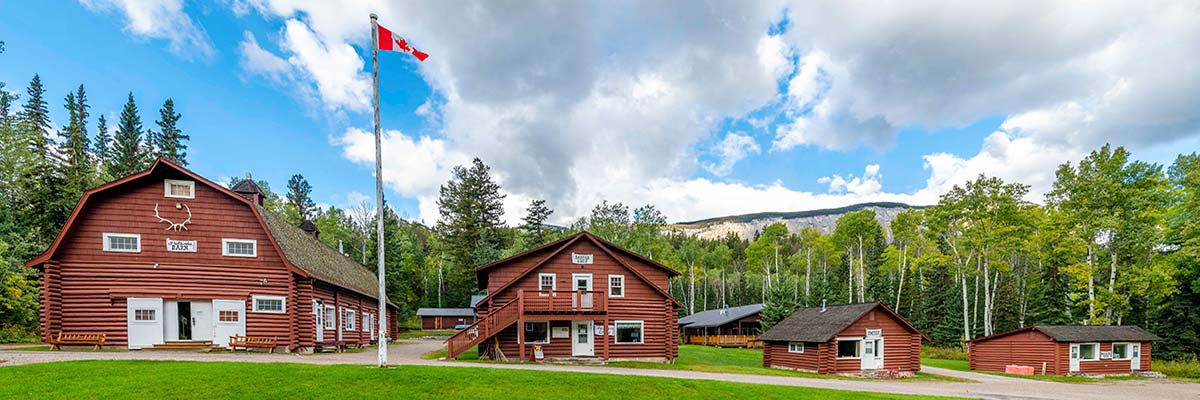
Photo: Matt Quiring Matt Quiring
Education and outreach
Parks Canada develops and delivers education and outreach programs and services to enable more Canadians, including youth and newcomers, to experience the outdoors and learn about the environment and history. In-person programming returned to the Palisades Stewardship Education Centre alongside delivery of virtual education programs. Palisades Stewardship Education Centre statistics for 2022 include:
- Delivered educational programming to 600 students
- Hosted workshops and meetings for 500 attendees
- Hosted 700 overnight guests who booked their stays through the Parks Canada Reservation Service
- Played a lead role in the delivery of the Mountain Parks Peak Discovery series, which reached 27,000 students across Canada. Topics included species at risk (such as caribou and bats), climate change, fire, and cultural history.
Parks Canada outreach delivered virtual and in-person educational programs to over 8000 participants in Vancouver and Edmonton which included themes of importance to Jasper National Park.
Getting the word out
Parks Canada helps Canadians learn about our shared heritage and experience the outdoors in a safe and enjoyable way by providing visitors with consistent and accurate information. To accomplish this Jasper National Park leverages its social media channels, newsletters and website to communicate important information, including trail maintenance updates, trip planning tips, avalanche control information and important updates on events like the Chetamon wildfire.
2022 communication stats include:
- 2,237,861 unique website page views
- 35,000 Twitter followers (2,300 new followers in 2022)
- 67,000 Facebook fans (7,000 new Facebook fans in 2022)
- 120 info-hub newsletters
#superSAR
A new social media campaign to increase knowledge of species at risk was launched in 2022. A series of posts were shared on both Facebook and Twitter platforms using the hashtag #superSAR - with the goal to share Species at Risk Act (SARA) species that live in Jasper National Park and what Parks Canada is doing to protect them.
‘Welcome to the Wild’ video
Tourism Jasper, in collaboration with Banff and Lake Louise Tourism and Jasper National Park produced a video to educate visitors and tour operators on proper wildlife viewing etiquette and safety messaging. The resulting “Welcome to the Wild” video was released through Tourism Jasper social channels, including distribution through international tour operators. The post on World Wildlife Day (March 3, 2022) received over 105,000 views on Facebook.
Jasper Ambassadors
The Jasper Ambassador Program, a frontline tourism training program offered by Tourism Jasper, was launched as a virtual course for the first time. Parks Canada provided content on a variety of safety, nature and wildlife-related topics. The course was highly successful, reaching 500 new locals in its first year of delivery.
Strategy 5: Managing development
In 2022, Parks Canada issued 128 Development Permits, 23 Building Permits, 20 Discretionary Use Permits, 123 Occupancy Permits, and 110 Completion Certificates were issued. In addition, 188 compliance inspections and 13 Sign Permits were issued.
Land use planning
Parks Canada and the Municipality of Jasper began discussions about sharing the responsibility for administration of land use planning and development within the Town of Jasper. Indigenous and public consultation on this issue began in 2023.
New housing
Development permits issued in 2022 included approvals for two new apartment buildings along Connaught Drive, which will add 144 much-needed rental units to Jasper’s housing stock. After extensive consultations and support from Jasper Community Housing Corporation and Municipality of Jasper to determine community needs and best use of available land, the Connaught Drive parcels were identified as preferred locations for the development of additional housing. Additionally, a building permit was issued for an 18-unit infill apartment building on Patricia Street, which is currently under construction. A development permit for a second 18-unit infill apartment building in the same area was also issued.
Commercial floor area
The Canada National Parks Act, establishes limits on the amount of commercial floor area that can be developed in national park communities. Under the Act, the total amount of commercial floor area (CFA) in the Town of Jasper cannot exceed 118,222 m2. At the time the cap was established, in 2001, there was 9,290 m2 of commercial floor area available to be developed. As properties are developed and redeveloped, the amount of commercial floor area has changed over time.
The table below summarizes the current state of the Town of Jasper’s Commercial Floor area allocation.
| C1+C2+C3+C4 (m2) | S Block (m2) | Total area (m2) | Percentage of CFA Cap total | |
|---|---|---|---|---|
| Developed CFA since 2001 | 4,339.60 | 2,415.20 | 6,754.80 | 72.71% |
| Outstanding allocations | 164.50 | 371.80 | 536.30 | 5.77% |
| CFA remaining | 1,998.90 | 0.00 | 1,998.90 | 21.52% |
Licences of occupation in the Tonquin Valley
In 2022, to protect threatened caribou, Parks Canada extended the seasonal winter closure in the Tonquin Valley to May 15 (closure was until February 15 in previous years). This extension impacted the two privately operated overnight commercial lodges in the Tonquin Valley, reducing their operating season by ten weeks and eliminating their ability to use snowmobiles to resupply their lodges. Recognizing this impact, Parks Canada discussed options with the outfitters which were to either operate from May 16 to October 31 each year or end their licences of occupation with compensation.
With guidance from an accredited and independent third-party valuator, Parks Canada reached agreements with Tonquin Valley Adventures and Tonquin Valley Backcountry Lodge as of October 31, 2022, to purchase all infrastructure and non-moveable assets and to end their licences of occupation. In the short term, the infrastructure and non-moveable assets will remain in place and will be evaluated for potential operational use. Parks Canada does not expect or intend to issue any licences of occupation or leases in the Tonquin Valley in the foreseeable future, in order to balance visitor experience needs in the summer with habitat security for sensitive umbrella species like caribou and grizzly bears.
Strategy 6: Climate change and adaptation
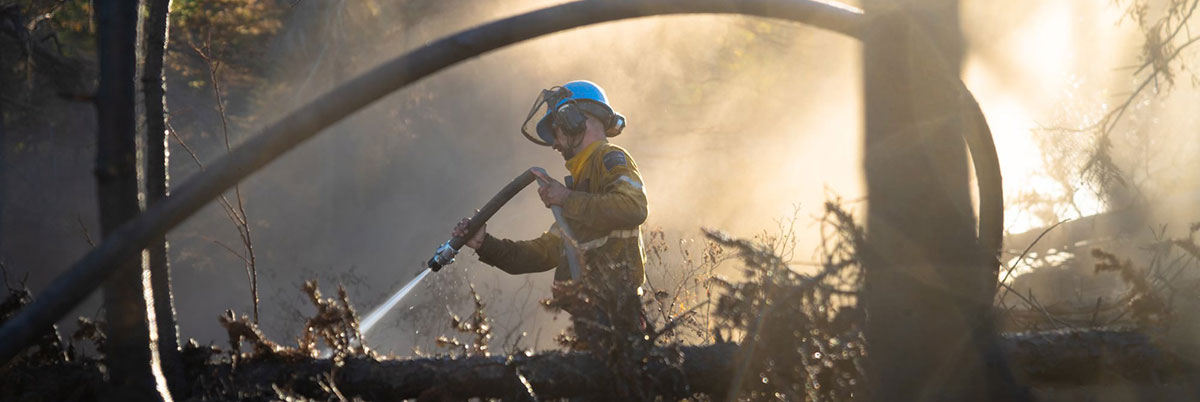
Photo: Curtis Matwishyn Curtis Matwishyn
Scientific modelling indicates climate change will lead to longer, hotter and dryer periods in the park. Climate change and other environmental forces challenge the integrity of ecosystems and the condition of natural and cultural resources. The impacts to these places are complex and Parks Canada integrates climate change mitigation efforts and adaptation actions into our work.
Stories about climate change in Jasper National Park were featured by various media outlets in relation to the Athabasca Glacier, the Chetamon wildfire, and release of the new park management plan.
Chetamon wildfire
On September 1, 2022, a lightning strike high up on the slopes of Chetamon Mountain, approximately 20 km north of the Jasper townsite, sparked a wildfire. Fueled by warm and dry weather, the wildfire eventually spread to an area of approximately 6,450 hectares and kept firefighters busy well into October. Fire suppression activities were immediate due to the location of the fire close to critical infrastructure.
Protecting resources
In addition to posing risks to critical infrastructure, including overhead transmission lines, the Chetamon wildfire also threatened the Moberly Homestead which is a significant Métis cultural resource. To protect this important place, fire crews installed sprinklers around the site, which successfully prevented impacts.
Collaboration
The wildfire was contained with the help of many partners including the Parks Canada National Incident Management Team, Parks Canada fire crews from across the country, the Municipality of Jasper, Alberta Wildfire, BC Wildfire, ATCO Electric and Trans-Mountain Corporation. Collaboration to restore power was essential when the town lost power beginning the evening of September 4, with multiple outages lasting a few hours to a few days. Preplanning during table-top exercises in the past allowed for collaboration at all levels of response and communication.
The Chetamon wildfire is considered “being held” until spring 2023, when wildfire specialists will reassess its status. Approximately 120 personnel and 10 helicopters worked to contain this wildfire.
Ecological benefits
The wildfire required immediate action when critical resources were threatened and significantly impacted residents and visitors to Jasper National Park. At the same time, there are many ecological benefits to wildfires as they reduce fuels, release nutrients and allow for a mosaic of ecosystems that support a diversity of plants and wildlife. Fire opens up the forest canopy and allows sunlight to reach plants on the forest floor, increasing productivity and biodiversity. Many plant species begin to sprout soon after a fire has passed.
Illegal drones
A drone operator was fined $10,000 after grounding helicopters on the Chetamon wildfire. Flying a drone near a wildfire endangers the lives and well-being of everyone working in the area. In total there were four charges laid against drone operators during the Chetamon wildfire.
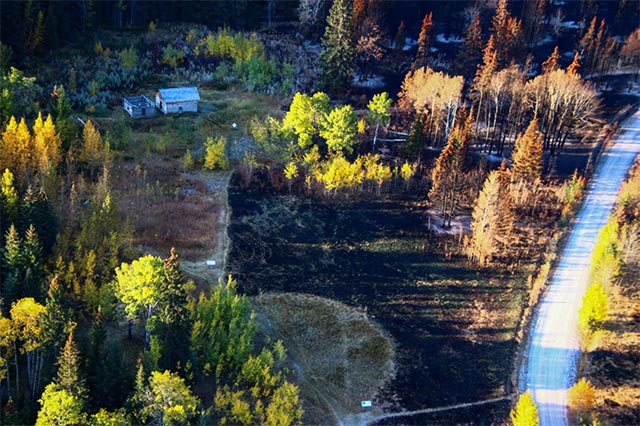
Photo: Parks Canada Parks Canada
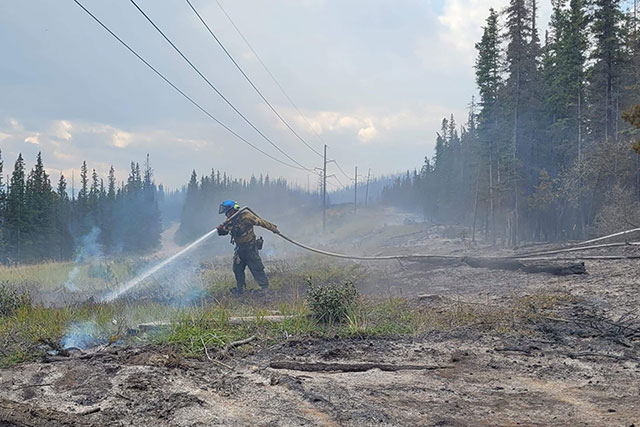
Photo: Parks Canada Parks Canada
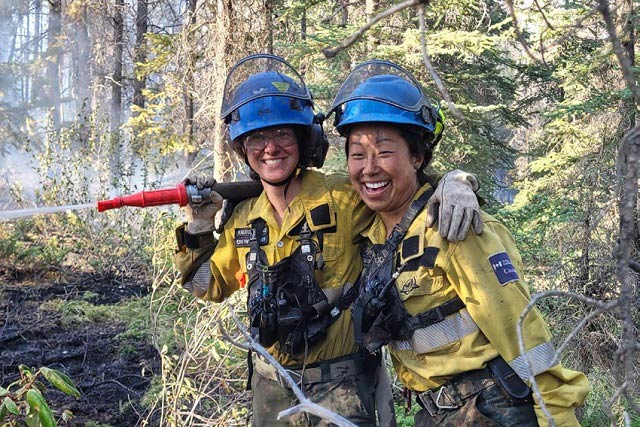
Photo: Parks Canada Parks Canada
Financial summary
In the fiscal year 2022-23, the Jasper Field Unit (which includes Fort St. James National Historic Site in British Columbia) had a budget of $25.5 million. The budget is primarily derived from revenue from entry fees, campground fees and land rents.
In 2022-23, 35% of the budget was allocated to staff salaries, 37% to operating costs and 28% to capital investments.
Additionally, the field unit received approximately $52.3 million in special funding for projects related to wildfire management, conservation and restoration, and investment in assets, including trails, campgrounds, roads and bridges. This includes funding received for the caribou recovery program ($3.5 million) and Chetamon wildfire operations ($7.7 million).
- Date modified :